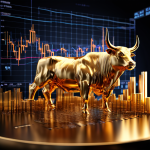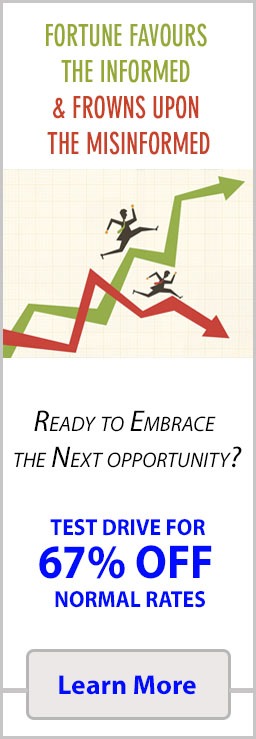
Beware the Madness: How Fear-Driven Herds Obliterate Wealth
Picture this: the market plunges, and with it, the last remnants of rationality. Panic erupts. Traders stampede for the exits, selling at any price, their decisions dictated by the raw, unfiltered terror burning at the root of the human psyche. This is not a one-off event—it is a recurring tragedy. The fear-driven herd mentality is a force of mass destruction, capable of incinerating fortunes in a matter of hours. Ignore this lesson at your own peril. Every crash, every flash of red on the screen, is a brutal reminder that the market’s greatest threat is not some arcane algorithm or geopolitical headline—it is the unthinking crowd, possessed by fear and blind to opportunity.
Yet, within this chaos lies a different breed of investor—those who see through the fog of panic, who dissect the anatomy of fear rather than fall prey to it. They operate not on instinct but on insight, wielding tools like the stochastic oscillator indicator to read the market’s pulse, decipher the very rhythm of panic, and exploit it with surgical precision. If you wish to dominate market swings, the first lesson is simple and brutal: question the herd, or be consumed by it.
Panic Unmasked: The Psychological Triggers Behind Market Meltdowns
Why do crowds lose their minds? Why do intelligent individuals devolve into stampeding herds, trampling their own portfolios in the process? The answers are as old as humanity itself. Cognitive biases—anchoring, confirmation, loss aversion—collide with herd instincts, creating a perfect storm. One person sells, and suddenly everyone is selling. Soon, the price action is no longer about fundamentals or even technicals; it is about survival.
History offers no shortage of cautionary tales. In 2008, Lehman Brothers’ collapse unleashed a wave of fear so powerful that bank runs, margin calls, and forced liquidations became the norm. The Great Depression, the dot-com bust, and the COVID—19 crash are each testaments to the destructive power of fear-driven herd mentality. The psychological triggers are universal: uncertainty breeds anxiety, anxiety fuels irrational action, and the market becomes a crucible of collective self-destruction.
But here’s the paradox: opportunities multiply while the crowd is paralysed by fear. The stochastic oscillator indicator, designed to highlight extreme conditions, becomes a contrarian’s scalpel—measuring not just price, but the intensity of the crowd’s panic. In these moments of chaos, the seeds of future gains are sown.
Contrarian Mastery: Riding the Wave Against the Tide
The market rewards neither the timid nor the reckless, but the disciplined contrarian. Think of Warren Buffett, who famously declared, “Be fearful when others are greedy and greedy when others are fearful.” Yet, most miss the deeper lesson: contrarian thinking is not about mindlessly opposing the crowd, but about reading the emotional undercurrents and betting strategically on their inevitable reversal.
Take Jesse Livermore, who watched the herd’s panic in 1929 and positioned himself for legendary profits. Or Charlie Munger, whose patience in the face of hysteria is matched only by his analytical rigour. In modern times, the sharpest traders use the stochastic oscillator indicator as both sword and shield. When the indicator flashes “oversold” during a panic, the crowd is dumping at irrational lows. The savvy investor recognises this as a prime buying opportunity, not a signal to join the exodus.
But there’s a vital twist. Contrarians are not immune to fear—they are simply masters of it. Their edge comes from understanding the nonlinear, interconnected forces at work: psychology, market structure, and the feedback loops that amplify every rumour and headline into systemic tremors. The stochastic oscillator indicator is their compass in this multidimensional space, pointing toward the edges where opportunity and risk converge.
Fear-Exploiting Strategies: Turn Panic into Profit with Calculated Aggression
If you wish to extract maximum value from volatility, you cannot afford to act like the herd. Instead, consider the strategic sale of put options during volatility spikes. When panic reigns and implied volatility soars, option premiums inflate absurdly. By selling puts on quality companies at prices you’d be happy to own, you collect rich premiums—often double or triple the norm.
Let’s be concrete. Picture March 2020: the world is in lockdown, the S&P 500 is in freefall, and the stochastic oscillator indicator is buried in oversold territory. The crowd is dumping Apple shares at $230. You, armed with discipline and clarity, sell $200 strike puts expiring in six months. The premium? $18 per contract. If the shares are put to you, you own Apple at $182—a bargain. If not, you pocket the premium, undeterred by the noise.
But the real power emerges when you reinvest these collected premiums into LEAPS—long-term equity anticipation securities. Imagine using your Apple put premiums to buy two-year call options on Microsoft, whose stochastic oscillator indicator also screamed “oversold” during the panic. Now you are leveraged to the upside recovery, compounding your returns as the market regains its senses. This is not reckless speculation; it is calculated aggression, rooted in probabilistic thinking and multi-layered analysis.
Disciplined Boldness: The Art and Science of Emotional Mastery
Boldness without discipline is suicide. Markets have a way of punishing hubris, especially in times of high volatility. The difference between the predator and the prey is not the absence of fear, but the presence of a plan. Every move you make—every put sold, every LEAPS purchased—must be underpinned by meticulous planning and rigorous analysis.
This is where the stochastic oscillator indicator shines. By quantifying extremes, it keeps you honest, forcing you to ask: is this truly capitulation, or just the early tremors? Combine it with other indicators—volume spikes, moving averages, sentiment data—and you build a fortress of probability. The greatest investors are not those who chase every swing, but those who wait, prepare, and pounce with surgical precision when the odds are stacked in their favour.
Emotional discipline is the secret weapon. When the market is screaming at you to sell, your ability to act rationally, anchored by data, analysis, and a robust process, is what separates winners from casualties. The stochastic oscillator indicator is not just a technical tool; it is a psychological anchor, reminding you that every panic is temporary, every selloff a potential springboard.
Visionary Empowerment: Break Free from the Herd, Forge Your Own Destiny
What does it truly mean to dominate market swings? It is not about predicting every tick, nor about eliminating risk. It is about becoming the architect of your own fortune—unshackled from the herd, empowered by insight, and driven by a relentless pursuit of excellence. The stochastic oscillator indicator is your gateway, but the real transformation happens within.
To master the market is to embrace its paradoxes. Fear and opportunity are two sides of the same coin. Volatility is both a danger and a gift. The crowd’s panic is your invitation to act—not impulsively, but with vision, strategy, and boldness.
Remember: the market is a living, breathing organism—a multidimensional web of psychology, physics, myth, and mathematics. Every swing, every crash, every euphoria is an emergent property of countless interacting forces. The stochastic oscillator indicator helps you see through the surface chaos to the deeper patterns that shape reality.
You have a choice. You can be swept along by the tide of fear, surrendering your autonomy to the madness of crowds. Or you can stand apart, disciplined, analytical, and fiercely independent. Harness the power of the stochastic oscillator indicator to dominate market swings, and you will not only accumulate wealth but also carve out intellectual and personal sovereignty in a world gone mad.
The Paradox of Mastery: Control Through Surrender
Here’s the final contradiction: to control the market, you must first surrender to its complexity. Accept uncertainty. Relish volatility. See every panic as a puzzle, every crash as a crucible. The stochastic oscillator indicator is not a magic bullet but a lens—a way to bring clarity to chaos, to see the opportunity where others see only risk.
True mastery is not about conquering fear but integrating it—using it as fuel for disciplined action. The market will always swing between euphoria and despair; your job is not to predict, but to prepare. Build strategies that thrive at the edges, where the crowd cannot follow. Combine technical insight with psychological resilience, and you will unleash emergent properties—innovative tactics and adaptive thinking that evolve with the market.
The next time panic strikes, remember: the crowd will always be wrong at the extremes. Stand apart. Think differently. Act decisively. Harness the power of the stochastic oscillator indicator to dominate market swings and claim your rightful place among the visionaries who shape the future, not merely survive it.













It is time to eliminate the caste system in America, starting with the military by writing in Chelsea Manning POTUS, the people’s Commander in Chief. If government employees paid Social Security and Medicare taxes like the rest of us then healthcare would become available to all equally and Veterans serving one term would have those taxes applied to their benefit amount when they retire. A uniform ranking system based on skill set would replace the caste officer or unofficer ranking system and upon honorable discharge would receive their passports and guns.